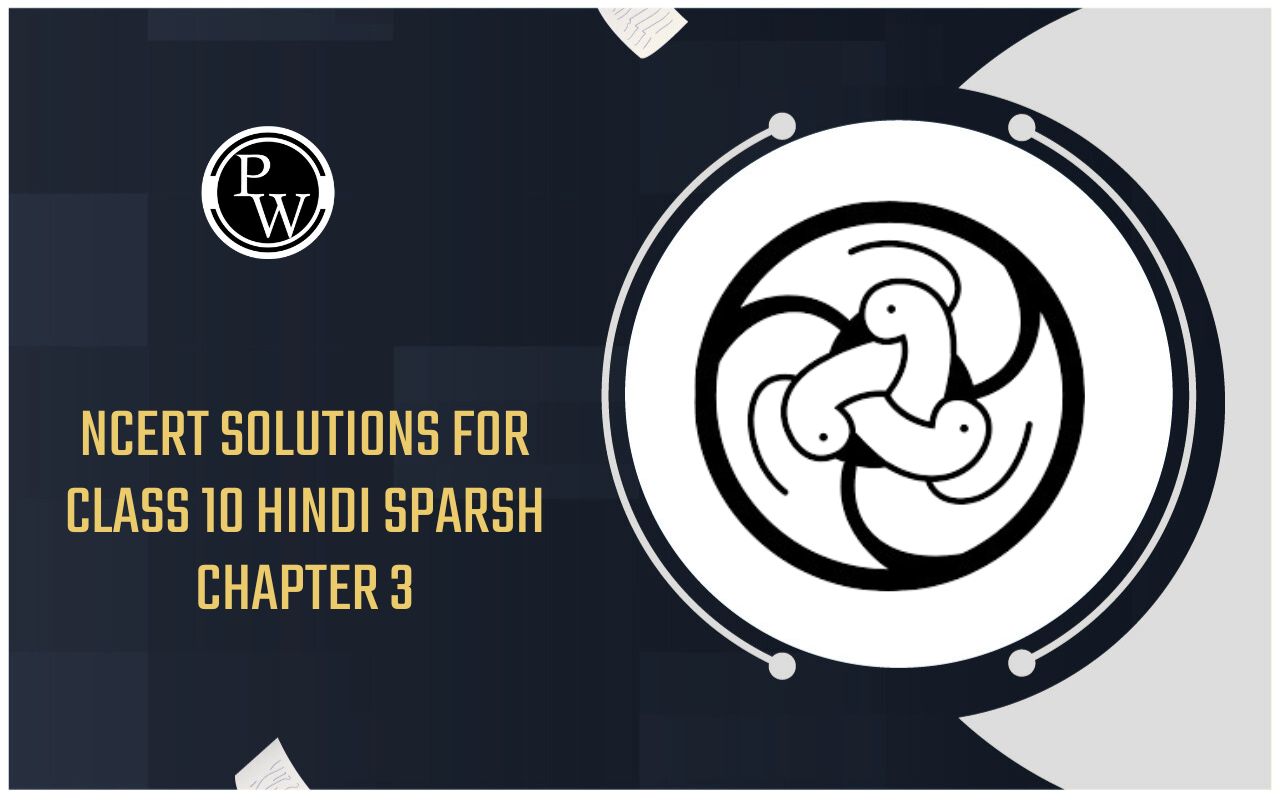
RS Aggarwal Solutions for Class 10 Maths Chapter 16 Exercise 16.1: RS Aggarwal Solutions for Class 10 Maths Chapter 16 Co-ordinate Geometry Exercise 16.1 provide detailed explanations and step-by-step solutions to help students understand the fundamentals of coordinate geometry.
This exercise focuses on the basics of plotting points on the Cartesian plane, understanding the concepts of the x-axis and y-axis, and calculating the distance between two points using the distance formula.These solutions are an excellent resource for reinforcing classroom learning and preparing for exams.
RS Aggarwal Solutions for Class 10 Maths Chapter 16 Exercise 16.1 Overview
RS Aggarwal Solutions for Class 10 Maths Chapter 16 Exercise 16.1 prepared by subject experts from Physics Wallah provide a comprehensive overview of coordinate geometry.With clear explanations and step-by-step instructions, these solutions help students grasp the basics of coordinate geometry, making it easier to solve related problems accurately and confidently.
RS Aggarwal Solutions for Class 10 Maths Chapter 16 Exercise 16.1 PDF
The PDF link for RS Aggarwal Solutions for Class 10 Maths Chapter 16 Exercise 16.1 is available below.It includes step-by-step explanations to help students understand and master the concepts, making it an invaluable resource for exam preparation and homework help.
RS Aggarwal Solutions for Class 10 Maths Chapter 16 Exercise 16.1 PDF
RS Aggarwal Solutions for Class 10 Maths Chapter 16 Exercise 16.1
Below we have provided RS Aggarwal Solutions for Class 10 Maths Chapter 16 Exercise 16.1 for the ease of the students –Q. Find the distance between the points :
(i) A(9, 3) and B (15, 11) (ii) A (7, -4) and B(-5, 1)
(iii) A(-6, -4) and B(9, -12) (iv) A (1, -3 ) and B (4, -6)
(v) P (a+b, a-b) and Q (a-b, a+b)
(vi) P (a sin α, a cos α) and Q (a cos α, - a sin α)
(i) A(5, -12) (ii) B (-5, 5) (iii) C (-4, -6).
(i) The distance of point (5,-12) from the origin is
Origin (0,0) point (5,-12) √[5²+(-12)²] = √25+144 = √169=13(ii) origin (0,0)
point (-5,5) √(25+25)=√50=5√2(iii) origin (0,0)
point (-4,-6) √16+36=√52=2√13 Q. Find all possible values of y for which the distance between the pointsA (2, -3) and B (10, y) is 10 units.
Q. Find the values of x for which the distance between the points P(x, 4) and Q(9, 10) is 10 units.
 → ( P Q ) 2 = ( 10 ) 2 u n i t s = 100 u n i t s ⇒ 9 – x 2 + 10 – 4 2 = 100 ⇒ 81–x2–18\timesx+36=100 → 81 – x 2 – 18 × x + 36 = 100 → x 2 – ( 18 × x ) + 17 = 0 →(x–1)(x–17)=0 →x=1orx=17 Hence the value of x is either 1 or 17.
→ ( P Q ) 2 = ( 10 ) 2 u n i t s = 100 u n i t s ⇒ 9 – x 2 + 10 – 4 2 = 100 ⇒ 81–x2–18\timesx+36=100 → 81 – x 2 – 18 × x + 36 = 100 → x 2 – ( 18 × x ) + 17 = 0 →(x–1)(x–17)=0 →x=1orx=17 Hence the value of x is either 1 or 17.
Q. Find the coordinates of the point on x-axis which is equidistant from the points (-2, 5) and (2, -3).
Q. Find points on the x-axis, each of which is at a distance of 10 units from the point A(11, -8).
Q. Find the point on the y-axis which is equidistant from the points A(6, 5) and B(-4, 3).
Q. If the point P(x, y) is equidistant from the points A(5, 1) and B(-1, 5) prove that 3x = 2y.
 If P is equidistant from point A and B then,AP:PB=1:1 Distance AP = √ ( x 2 − x 1 ) 2 + ( y 2 − y 1 ) 2 = √ ( x − 5 ) 2 + ( y − 1 ) 2 A P 2 = x 2 + 25 − 10 x + y 2 + 1 − 2 y A P 2 = x 2 + y 2 + 26 − 10 x − 2 y Distance B P = √ ( − 1 − x ) 2 + ( 5 − y ) 2 B P 2 = 1 + x 2 + 2 x + 25 + y 2 − 10 y B P 2 = 26 + x 2 + y 2 + 2 x − 10 y Since P is the midpoint. A P 2 = B P 2 x 2 + y 2 + 26 − 10 x − 2 y = x 2 + y 2 + 2 x − 10 y + 26 x 2 − x 2 + y 2 − y 2 + 26 − 26 − 10 x + 2 x = − 10 y + 2 y − 12 x = − 8 y − 3 x = − 2 y 3 x = 2 y hence proved
If P is equidistant from point A and B then,AP:PB=1:1 Distance AP = √ ( x 2 − x 1 ) 2 + ( y 2 − y 1 ) 2 = √ ( x − 5 ) 2 + ( y − 1 ) 2 A P 2 = x 2 + 25 − 10 x + y 2 + 1 − 2 y A P 2 = x 2 + y 2 + 26 − 10 x − 2 y Distance B P = √ ( − 1 − x ) 2 + ( 5 − y ) 2 B P 2 = 1 + x 2 + 2 x + 25 + y 2 − 10 y B P 2 = 26 + x 2 + y 2 + 2 x − 10 y Since P is the midpoint. A P 2 = B P 2 x 2 + y 2 + 26 − 10 x − 2 y = x 2 + y 2 + 2 x − 10 y + 26 x 2 − x 2 + y 2 − y 2 + 26 − 26 − 10 x + 2 x = − 10 y + 2 y − 12 x = − 8 y − 3 x = − 2 y 3 x = 2 y hence proved
Q. Find the coordinates of the point equidistant from three given points A(5, 3), B(5, -5) and C(1, -5).
Q. If the point C(-2, 3) is equidistant from the points A(3, -1) and B(x, 8), find the values of x. Also, find the distance BC.
Q. (i) If the point P(2, 2) is equidistant from the points (a+b, b-a) and (a-b, a+b), prove that bx = ay. (ii) If the distances of P(x, y) from A(5, 1) and B (-1, 5) are equal then prove that 3x = 2y.
(i)
Distance between the points (x, y) and (a+b, b-a) & (a-b, a+b) is equal ⇒ √ [ x − ( a + b ) ] 2 + [ y − ( b − a ) ] 2 = √ [ x − ( a − b ) ] 2 + [ y − ( a + b ) ] 2 ⇒ x 2 + ( a + b ) 2 − 2 x ( a + b ) + y 2 + ( b − a ) 2 − 2 y ( b − a ) = x 2 + ( a − b ) 2 − 2 x ( a − b ) + y 2 + ( a + b ) 2 − 2 y ( a + b ) ⇒ − 2 a x − 2 b x − 2 b y + 2 a y = − 2 a x + 2 b x − 2 a y − 2 b y ⇒ a y − b x = b x − a y ⇒ 2 a y = 2 b x ⇒ b x = a y(ii)
It is given that P is equidistant from A and B. So, PA = PB Using distance formula,(i) (1, -1), (5, 2) and 9, 5 (ii) (6, 9), (0, 1) and (-6, -7)
(iii) (-1, -1), (2, 3) and (8, 11) (iv) (-2, 5), (0, 1) and (2, 3).
Q. Show that the points (-3 , 3), (3, 3) and ( − 3 √ 3 , 3 √ 3 ) are the vertices of an equilateral triangle.
(a) 2 (b) 4 (c) -4 (d) − 5 2

(a) 13 (b) 26 (c) 169 (d) 238
 Median AD of the triangle will divide the side BC in two equal parts. Therefore, D is the mid-point of side BC. D(x,y) = {(6+1)/2 , (5+4)/2} = {7/2 ,9/2} (c) (7/2,9/2) is correct answer
Median AD of the triangle will divide the side BC in two equal parts. Therefore, D is the mid-point of side BC. D(x,y) = {(6+1)/2 , (5+4)/2} = {7/2 ,9/2} (c) (7/2,9/2) is correct answer
Benefits of RS Aggarwal Solutions for Class 10 Maths Chapter 16 Exercise 16.1
- Clear Explanations: The solutions provide detailed step-by-step explanations making complex concepts in coordinate geometry easy to understand.
- Enhanced Understanding: By working through these solutions students can deepen their understanding of plotting points understanding the Cartesian plane and using the distance formula.
- Exam Preparation: These solutions align with the Class 10 syllabus helping students prepare effectively for exams by focusing on the key concepts and types of questions that may appear.
- Confidence Building: With comprehensive solutions and explanations, students can build confidence in their ability to tackle coordinate geometry problems, leading to better performance in tests and exams.
RS Aggarwal Solutions for Class 10 Maths Chapter 16 Exercise 16.1 FAQs
What is coordinate geometry?
What is a Cartesian plane?
How do you plot a point on the Cartesian plane?
How do you determine if two lines are perpendicular?










